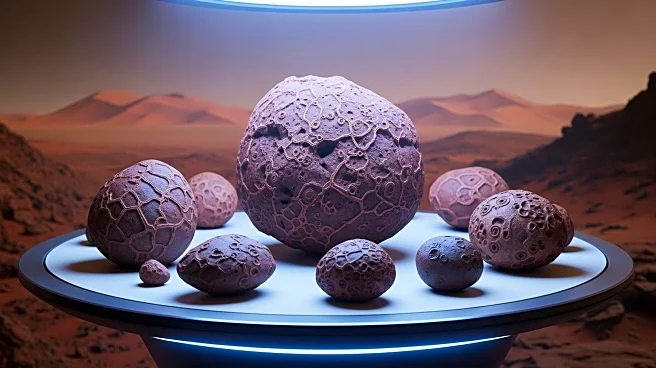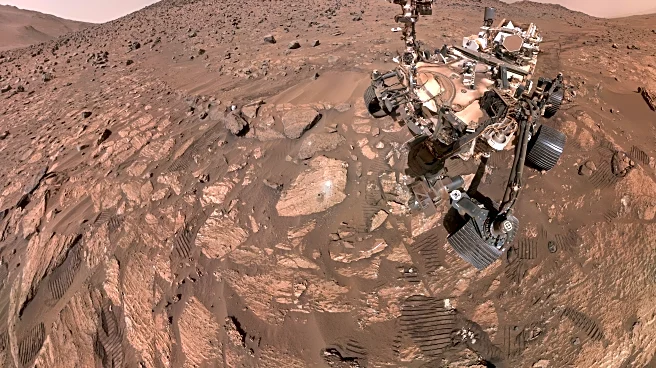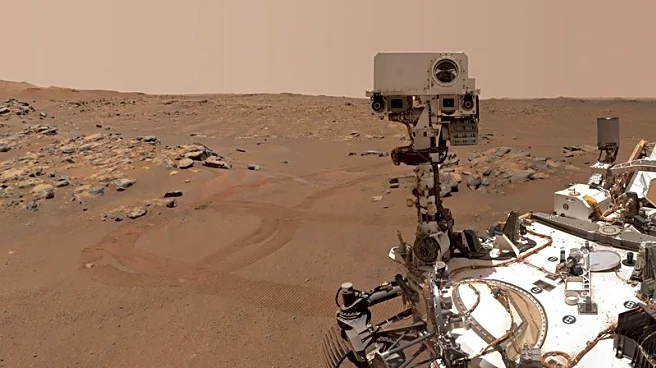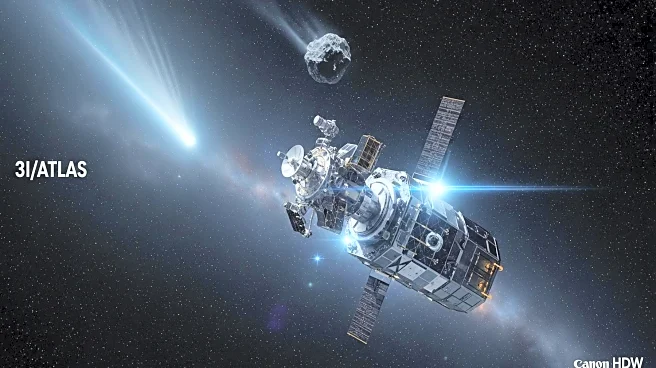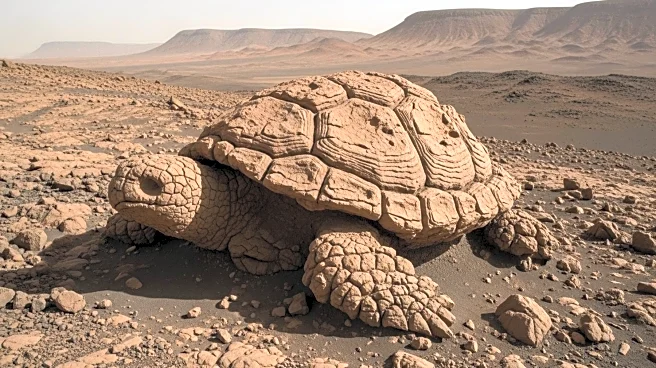What's Happening?
NASA's Perseverance rover has discovered mudstones on Mars with markings that may indicate past microbial life. These 'leopard-spot' rocks contain minerals that could have formed through chemical reactions involving organic matter. While the minerals might also result from natural geological processes, their presence meets NASA's criteria for potential biosignatures. The discovery is significant enough to warrant further investigation, although confirmation of biological origin would require returning samples to Earth.
Why It's Important?
The discovery of potential biosignatures on Mars is a major step in the search for extraterrestrial life. It suggests that Mars may have had conditions conducive to life billions of years ago, when it had a thicker atmosphere and water. The findings could influence future Mars exploration missions and the scientific understanding of the planet's history. The potential for past life on Mars raises questions about the universality of life and the conditions necessary for its existence.
What's Next?
NASA and ESA have proposed a Mars sample return mission to analyze the rocks on Earth, but budget cuts could threaten its implementation. The scientific community will continue to study the data and explore alternative explanations for the mineral formations. The Perseverance rover will keep investigating the Jezero Crater, searching for more evidence of past life and contributing to the broader understanding of Mars' geological history.
